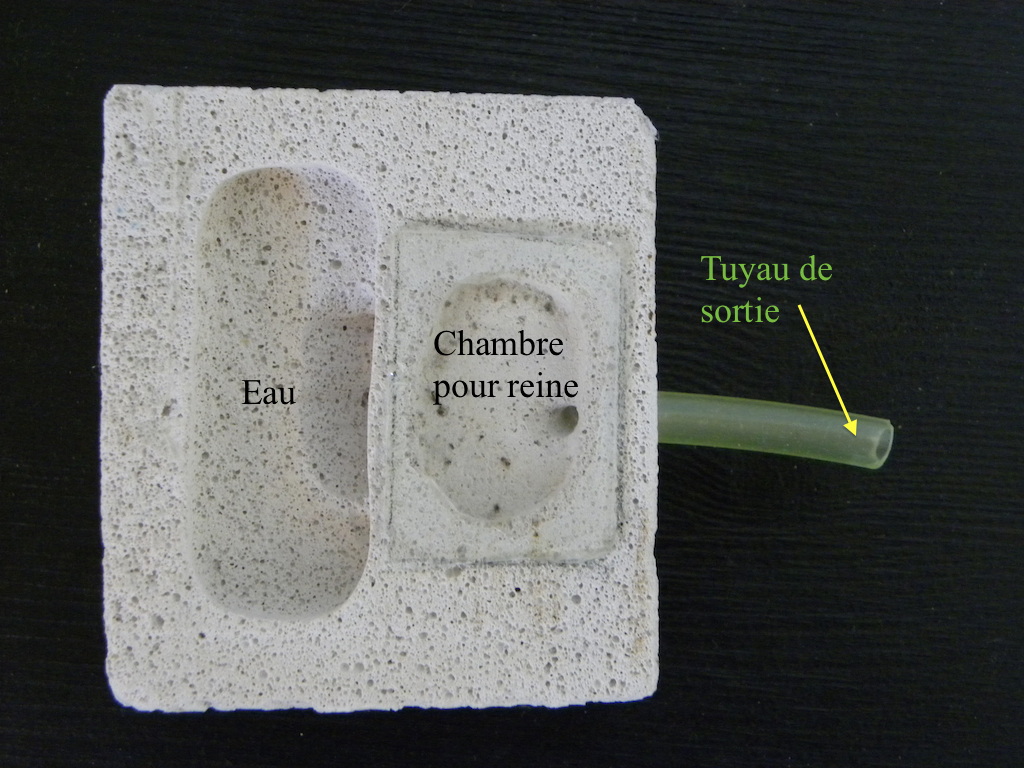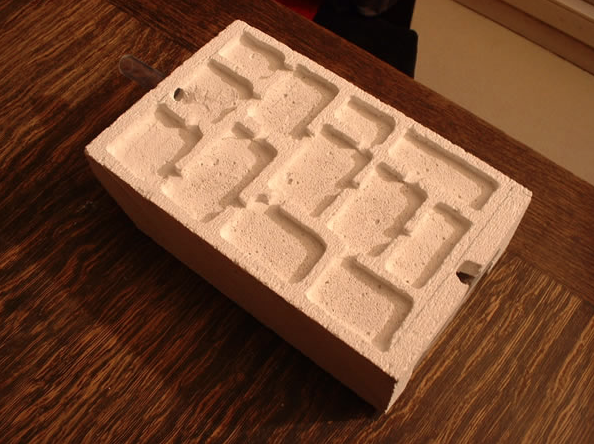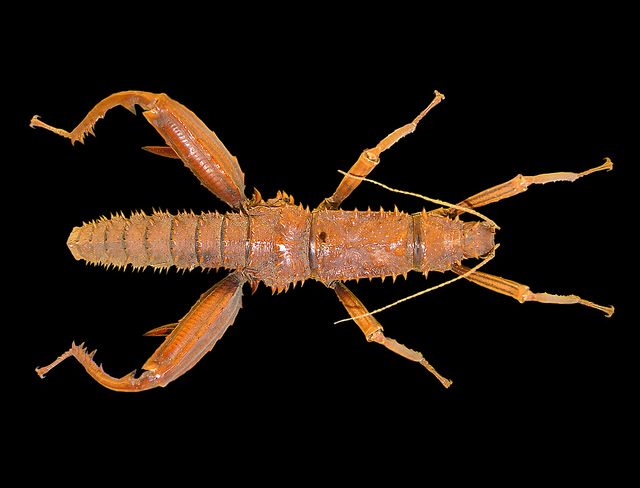Where to get colonies? How to feed them? Which species to choose
?
Before obtaining a colony, it is necessary to have the nest that will shelter the ants. I present a method to you to build an artificial anthill here. You also need to know the basics about their biology and ecology. You can find this information here.
-
Where to get colonies?
There are many ways to get colonies.
caption id=”attachment_805″ align=”alignright” width=”150″] Reine Lasius niger décollant pour l’essaimage (Source)[/caption]
Reine Lasius niger décollant pour l’essaimage (Source)[/caption]
1) – the first method is to remove a fertilized queen from the wild. This is the most natural and environmentally friendly method. However, it takes a little time before she has these first workers and a little practice. The hardest part is finding a queen!
Recall : to reproduce, ants emit during swarms of winged males and females that mate in flight. The queen, once fertilized, falls to the ground, loses her wings and goes in search of a cavity to hide. This is when they can be harvested. Swarming periods vary according to the species, they are spread out from spring to autumn, it is thus necessary to inquire beforehand. Contact me for such information and advice.
Once the queen is in hand, it is a question of placing her in a place that offers her calm, humidity and darkness. 2 possibilities: Either we use a small block of cellular concrete (see this article), or a glass test tube. In the first case, the goal is to build a mini nest consisting of a room as I explain in the dedicated article (see photo). For the second, the test tube must provide moisture, for this, water will be trapped by a cotton pad placed in the middle (see photo). Even if the queen does not feed herself until the first workers arrive, she has sufficient nutritious reserves. It is however necessary, in both cases, to leave a passage towards the outside allowing the young workers to go out to seek food. To increase the chances of success, I bring, with the help of a syringe, some nutritional resources to the queen during this period. I use honey diluted in water, providing carbohydrates, mineral salts and water. Once the first workers appeared, the colony became autonomous.
caption id=”attachment_788″ align=”alignleft” width=”277″]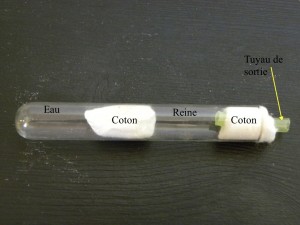 Queen test tube, to start a colony – ©Photo B. GILLES[/caption]
Queen test tube, to start a colony – ©Photo B. GILLES[/caption]

2) – The second method is to get an existing colony from the wild by digging it up. In addition to the technical difficulties that this represents, some anthills can be several tens of centimetres away, even more! the major obstacle is to locate the queen among the workers and the pieces of land. Without it, the colony cannot survive. I find this practice rather harmful because healthy colonies are destroyed, especially if one is forced to destroy several colonies before finding a queen. Once the whole colony is collected, and you have a nest ready to be inhabited and humidified, you deposit everything in the hunting area. The ants will look for a place that suits them and will therefore quickly enter the aerated concrete nest. The colony will calm down quickly, get organized and resume these activities. You will then be able to observe and feed them.
3) – The third method is the easiest and fastest. It’s about buying a colony from a seller, yes, it exists! It allows you to choose your species easily, the size of the colony, the period you want to start and has no negative impact on the environment. Several companies propose colonies, but also nests in kit and any other material for the breeding of ants (food, tube, hunting area, decorations…). Examples of sites offering anthills for sale: here.
-
How to feed them
Ants are for the great majority omnivorous species, which facilitates their feeding. To put it simply, ants get their nutritional energy from carbohydrates (adults) and proteins (larvae), of plant and/or animal origin.
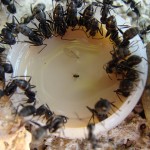
In nature, ants find their main source of carbohydrates in the honeydew secreted by aphids. This is why ants raise and protect aphid populations on plants. For my part, I dilute honey with water that I distribute using a syringe in a small drinking trough provided for this purpose (see photo). I can thus control the given quantity and the cleaning of the container. Care not to distribute too much at once to avoid drowning. I prefer to give honey in small quantities regularly than too much at once. A savoir : ants have the ability to store excess honey in their abdomen. They can therefore receive nothing for several days easily.
Larvae require more energy to develop, hence protein consumption. There are so-called opportunistic or generalist species, which consume both plant and animal matter, and so-called specialised species, which consume one or certain specific types of food. For all my species, insects, especially flies, are very popular prey. Fresh, non-living prey is preferred. To neutralize the prey, either we crush the flies a little, or a passage in the freezer can do the trick. This second technique has the advantage of killing parasites and mites that can develop in the colony.
After, it can be fun to try other sources of food, to experiment even what your residents prefer. Thus, jam, chicken, egg yolk are foods they love.
Some species like Messor sp. are rather granivorous. That is, they prefer vegetable matter, especially seeds, but also bread, bran and fruit. Small insects from time to time are widely possible! These ants have the particularity to constitute an attic to store reserves of food.
-
What species to choose?
The choice of species must be made according to the level of breeding difficulty required for a particular species. Species require more or less attention, humidity, temperature and food conditions more or less precise and specific.
It is advisable to start with easy species, not requiring too many special conditions and maintenance. Species like Lasius niger, Lasius emarginatus or Tetramorium caespitum are good candidates. These are species that are common in our gardens and that are omnivorous. They develop rapidly and quickly become very numerous.
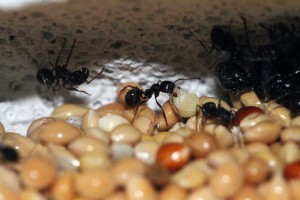
Also, the Messor barbarus species is also a good choice. It is easy to raise (feeds on seeds) but still requires a temperature above 20°C for good development. It is interesting because the workers are polymorphic (different morphology) with the presence of 3 castes (minor, media and major).
I am, of course, at your disposal for any questions, requests for advice, tips and/or expertise. Do not hesitate to contact me here. Looking forward to reading and helping you!
I suggest you visit this site : myrmecofourmis.org, a site and forum dedicated to Myrmecology (science of ants), you can find all the information concerning the breeding of ants and exchange with other enthusiasts.
Recommendation of books on this theme:
– Fourmis de France, de Belgique et du Luxembourg
– The incredible instinct of ants : From mushroom growing to civilization

